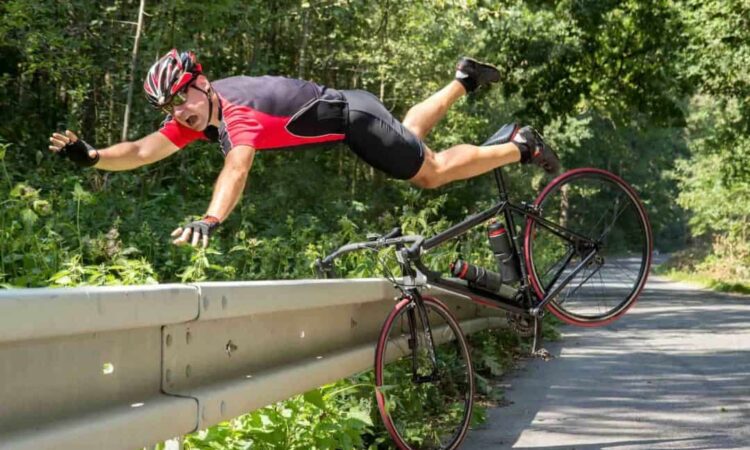If somebody asked where you would be safer riding a bicycle between the road and a trail, you would probably pick the trail.
After all, the roads are far busier. Also, accidents that happen on the road get the most media attention, so it is easy to assume they are riskier for cyclists. The truth is, you will be much safer on the road than you would on the trail.
Accident Statistics
According to statistics, 67 percent of bike-related injuries happened on the trail compared to 33 percent on the road. Also, most bicycle accidents resulted in minor lacerations, which accounted for 67 percent of all injuries.
While biking on trails results in most injuries, the chances of suffering severe injuries are higher when riding on the road.
Risks on a Trail
Different riding scenarios present different challenges. The main challenge when riding on a trail is loose ground which can cause the bike to skid.
Also, many trails go through forests, which could have debris, such as twigs on the road, which could get entangled in the bike’s wheels, resulting in an accident. The trails can also be pretty narrow, which could pose a danger, especially when many bikers and hikers are on them.
Risks on the Road
When driving on the road, your most significant danger is motorists. Bicycles are relatively small compared to cars, meaning their visibility can decrease significantly. You can improve visibility by wearing brightly colored clothes and reflective strips at night. If you are riding in low visibility, you must have a light on your bike, which can help improve your visibility.
Another risk on the road is potholes. Bicycles are inherently unstable. If a bicycle hits a pothole or an uneven road surface, the chances of losing control of the bike are high, which can result in an accident.
Like drivers, pedestrians are mainly on the lookout for cars before crossing the road. Even when a bike could be in open view, it may not register in the pedestrian’s mind that they need to give way, increasing the chance of them getting in your way, which could result in an accident.
A Helmet Is Important Either Way
Whether you are on the trail or on the road, having a helmet is a good way to protect your head from possible injury in case an accident happens.
According to statistics, people without a helmet at the time of an accident have a 38 percent chance of suffering injuries requiring neurosurgery, compared to 17 percent for people with helmets.
What to Do After an Accident
According to the CDC, approximately 1000 cyclists die in road accidents yearly. Another 130,000 suffer injuries that require medical attention.
“When another road user is to blame for your accident, you could be eligible for compensation. But you may need to work with a bicycle accident lawyer if you want to recover fair compensation,” says C.D. Longo of the Longo Biggs Injury Law.
If you get into a collision with a car, the chances of suffering severe injuries can be relatively high. So, the first thing to do after an accident is to get medical attention even when your injuries don’t seem serious enough to warrant seeing a doctor.
You may also document the scene of the accident, which can help your lawyer determine fault in the accident. Recoverable damages in bicycle accidents include economic and noneconomic damages. Monetary damages include hospital bills, property damage, and the cost of prescription drugs.

